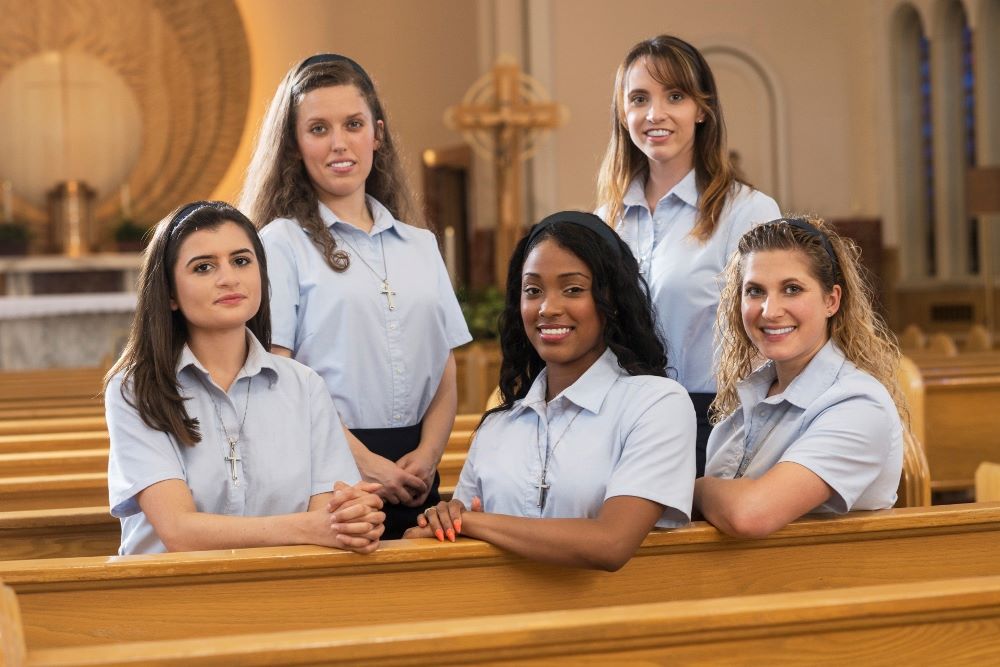
Francesca DiPaola, Claire Halbur, Eseni Ellington, Christie Young and Stacey Jackson are the five young women who visited three religious communities while being filmed for "The Sisterhood" in 2014. (Lifetime/Scott Gries)
Editor's note: Global Sisters Report, the dynamic online community that reports on and gives voice to Catholic women religious around the world, is celebrating its 10th anniversary this year. Join us as we take another look at stories and columns published in 2014 with new updates and reporting.
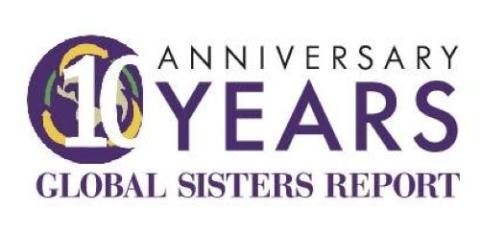
In Episode 4 of "The Sisterhood: Becoming Nuns," five women ages 21 to 27 ride in a van from a Chicago convent to a Kentucky convent, in the midst of a reality-TV "discernment" process. With phones freshly returned to them for the journey, they quickly Google their next congregation. Francesca, the youngest, happily says, "They do look young, which is cool."
"I'm excited if there are sisters closer to our age," 26-year-old Claire agrees. "Because the other two communities haven't really had sisters close to our age."
In their shared hope of finding themselves reflected in the sisters they meet, the young women — Christie, Claire, Eseni, Francesca and Stacey — inadvertently express the challenge not just of made-for-reality-TV discernment, but the difficulty for religious congregations to find and attract youthful candidates.
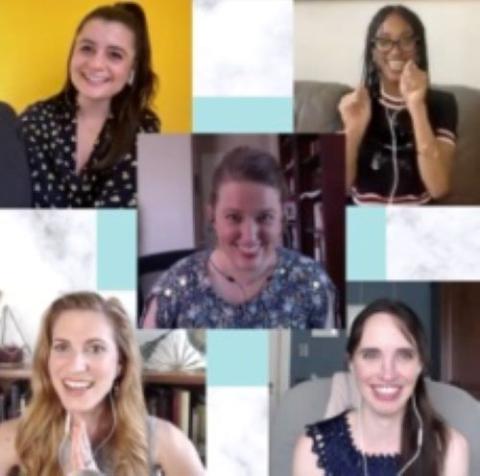
The five young women discerners from the Lifetime show "The Sisterhood" reunited via Zoom in 2020. (Courtesy photo)
In 2014, when Lifetime TV (along with Hot Snakes Media, who also created four seasons of the controversial and popular "Breaking Amish" shows), proposed "Sisterhood," three congregations discussed and consulted and decided to sign on for the project.
One at a time, over six weeks, they led five young Catholic women through an accelerated "discernment process" with TV cameras rolling through their convents. A recent binge of "Sisterhood" led me to question how, 10 years later, that show might have impacted the communities and the women who participated. As the mother of four 20-something daughters, with a combined 69 years of Catholic education among them, I wanted to see how young women of their generation might experience the idea of a calling. And if shows like "The Bachelor" and "Married at First Sight" rarely lead to successful, long-lasting marriages, I wondered if reality TV had any chance of inspiring commitment to religious life.
I believe we can gain some insights about young people and religious life by watching the vocations process on the small screen. In my follow-up conversations, those on both sides of the reality-TV discernment journey claimed some significant benefits from the experience, even though none of the young women from the show actually became a nun. (Spoiler alert: Two initially joined convents but both "discerned out" within six months.)
Everyone knows about the aging of the population of Catholic sisters, as well as the well-documented increasing disaffiliation of young people from organized religion. According to a 2014 CARA study, only 1% of women religious in the United States are under 40. In 2020, according to the Pew Research Center, more than one third of American teens considered themselves religious "nones."
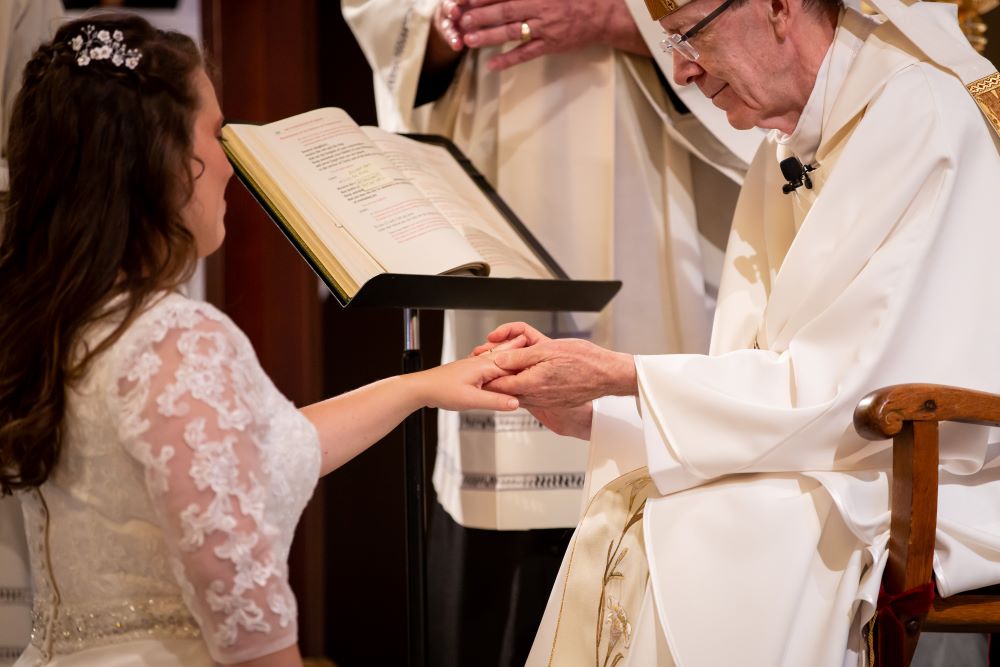
Claire Halbur, one of the cast members of Lifetime's "The Sisterhood," receives the bridal ring from Bishop Thomas Olmsted during the Rite of Consecration of a Virgin Living in the World on Aug. 22, 2020. (Courtesy photo)
Recruiting young women has become a challenge for Catholic sisters: How do you reach the young people you need, when you don't have young people to demonstrate what commitment to religious life looks like for millennials and Gen Zers? The stark reality of a dramatic decrease in vocations among late 20th and early 21st century youth has led some congregations to close up shop, valiantly and tearfully declaring the approaching "completion" of their earthly mission, while others eagerly embrace 21st century technologies in an attempt to market to young women and replenish their ranks. Social media campaigns on Instagram or TikTok, virtual tours of convents and Zoom "come and see" experiences attempt to reach young people where they are and demonstrate the relevance of consecrated life in today's world.
The thing is, once young women and nuns get together, they have a tendency to transform one another. In Episode 4 of "Sisterhood," Claire says, "I've grown in ways on this journey that I'd never imagined," and her declaration could apply to all the young women on the show. Perhaps unintentionally, the show paid spiritual dividends to the young women discerning, and it seems to have benefited the congregations in unexpected ways.
Claire said that she hoped to feel called to one of the communities they visited on the show, and in the final episode she discerns a vocation to the Sisters of St. Joseph the Worker in Kentucky. She returned to their convent after the show, but ultimately decided that the fit wasn't right. A reality show looks for "flashy, dramatic moments" rather than prayer time, she told me, but "grace works in quieter ways." A career in liturgical music led her to Phoenix, Arizona, where she serves as director of sacred music for St. Anne Parish in Gilbert. In August 2020, she professed vows as a consecrated virgin living in the world. While following an individual vocation in her diocese, she also has a leadership role in the USACV (United States Association of Consecrated Virgins).
'They left a special mark on my soul.'
—Eseni Ellington
The oldest daughter in a devout Catholic family from Virginia, Stacey had impeccable "Sisterhood" credentials that also happened to include roles in a couple of Broadway touring productions. In an adorable farewell scene that she choreographed for Episode 3, the young women and the Carmelite Sisters for the Aged and Infirm perform a lively dance together — the young women in pencil skirts and Oxford blouses, the sisters in dress habits and sensible shoes. They look like the cast of "Sister Act" as they form a line, waving their arms in unison and bouncing joyfully to "Easy Peasy Lemon Squeezy."
During the filming of "Sisterhood," Stacey seemed reticent during the confessionals, but she professed great admiration for the sisters throughout the process. After the show, she spent five years directing retreats and mission trips for the Carmelite Sisters. Now married with four children, she has built a "Catholic influencer" career as a speaker, singer and podcast host. Stacey stays in touch with the sisters, who reciprocate the connection. "She has become a sister to us," said Carmelite Sr. Peter Lillian Di Maria.
In the sixth and final episode, the camera crew follows Christie back to Chicago, where she surprises Sr. Beth Ann Dillon by asking to join the Sisters of St. Mary of Providence. Dillon takes Christie to the chapel to meet with the congregation's superior, wagging her finger at the camera crew. "You do not film this. You do not film this," she tells them.
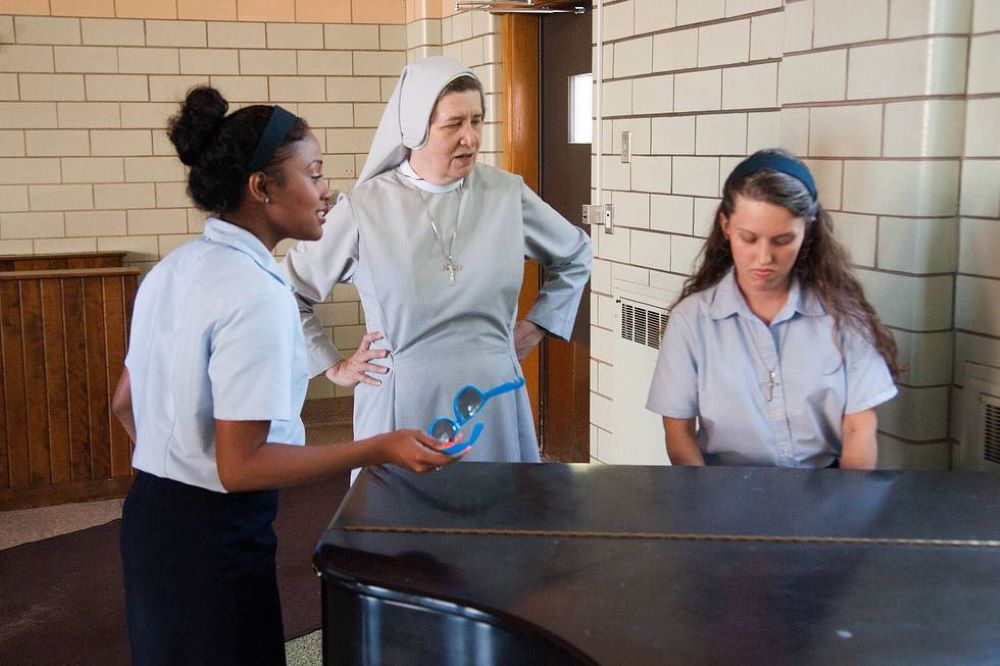
During "The Sisterhood," five young women visited three women's religious communities. From left are Eseni Ellington, Sr. Beth Ann Dillon of the Sisters of St. Mary of Providence and Claire Halbur. (Lifetime/Scott Gries)
The screen goes black with white letters: "It is protocol that a girl wishing to join the order must announce to the superior in private." After cutting away to scenes with the other characters, the camera returns to Chicago, where Dillon leads Christie to the convent dining room and announces, "I have a gift for us." One of the other sisters, tearfully hugging Christie, says, "This is the best gift we could get today."
Christie didn't make it past the postulancy, though. In a 2020 cast reunion on Stacey's "Called and Caffeinated" podcast, Christie explains that she "discerned out" of the convent. Also married with children now, she says that the show gave her the freedom to explore religious life, helping her with student debt and other financial obligations so that she could find out whether God was calling her to become a nun.
Just two months out of college at the time of filming, Francesca landed on the show by answering a casting call for "Catholic girls." Though she didn't understand what she had signed up for until filming began, she said that she benefited from the deep conversations with the other girls that didn't make it into the edited version of the show. She said that the discussions about God that took place during the filming "really deepened" her faith, especially the convictions of the older girls. "I was questioning everything, but their confidence reassured me," she said.
After the show ended, Francesca worked as a liquor sales representative until her father fell victim to COVID-19 during the early days of the pandemic. Now the CEO of the nonprofit he founded, Homes for Vets, she lives in Manhattan, where she is active in her Catholic parish and planning her wedding. She remains deeply respectful of the sisters and appreciative of her time with them.
"I really gained a deeper understanding of my spirituality," she told me. "The nuns were so insightful."
Eseni, who was 23 at the time of filming, told me that participating in the show helped her to gain a personal relationship with God, something she hadn't even recognized as missing in her life previously. After the show, Eseni worked as a model and played herself on the Bravo reality show "First Family of Hip Hop." Now she has a business (with her fiancée) focused on healing young people through yoga, meditation and art therapy.
No longer a practicing Catholic, Eseni still appreciates what she learned from spending time with the sisters and credits them for teaching her about living in a community of strong women. "They left a special mark on my soul," she said.
Despite no yield of new sisters, a group of Carmelite Sisters for the Aged and Infirm said that they appreciated the chance to show the world their ministry. DiMaria said that even if they didn't gain new members, the show gave their congregation some powerful publicity for their ministry, with millions more people aware of the work they do. Sr. Marie Thérèse Healy said that the Carmelites loved having the young discerners in their convent and hearing what 20-somethings are thinking and feeling.
Advertisement
Healy emphasized that her community's participation in "Sisterhood" gave them good opportunity for reflection and helped them all to see that vocations work belongs to everyone.
"It's the evangelization at this point," Sr. Mark Louis Randall said. "To help them deal with the world they're living in." Rather than focusing on recruitment, the Carmelites now ask themselves: How do we support and accompany young women in the 21st century? How do we help them understand what it means to be Catholic in the world today?
As Healy put it: "We as religious carry the light of God within us. And we carry as much as we can to others."
In Episode 4 of "Sisterhood," the young women go swimming at the Chicago convent of the Sisters of St. Mary of Providence. Dillon, previously only seen in full habit, appears on the pool deck in a modest, one-piece swimsuit, still wearing her veil. As she talks to the young women, she removes her veil and they see her hair for the first time. They gasp delightedly. "Whoa!" says Stacey. "I'll never look at you the same way again!"
Even if none of them took the plunge to become a nun, perhaps the greatest value of the show was demystifying the sisters, making the convents — and the women who live and work there — real for the younger generation.





